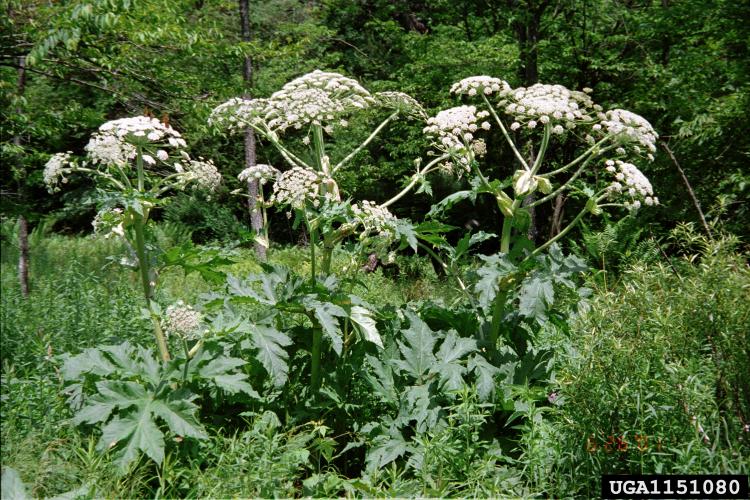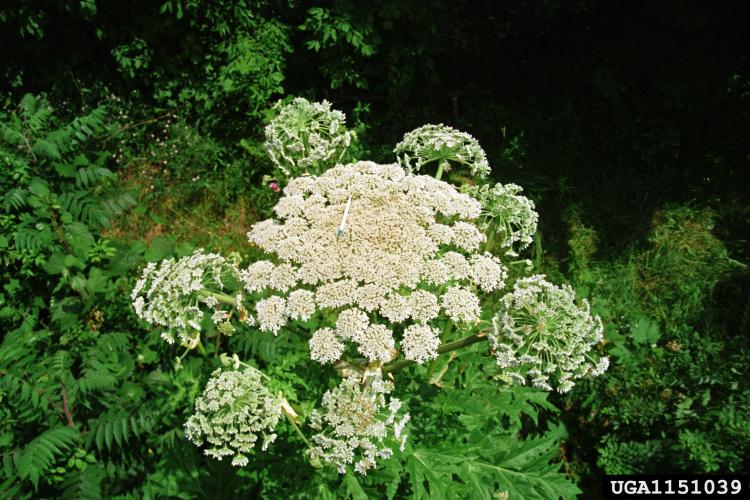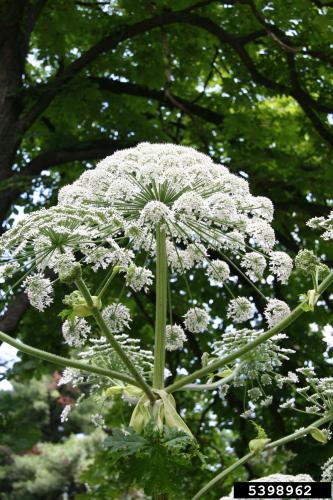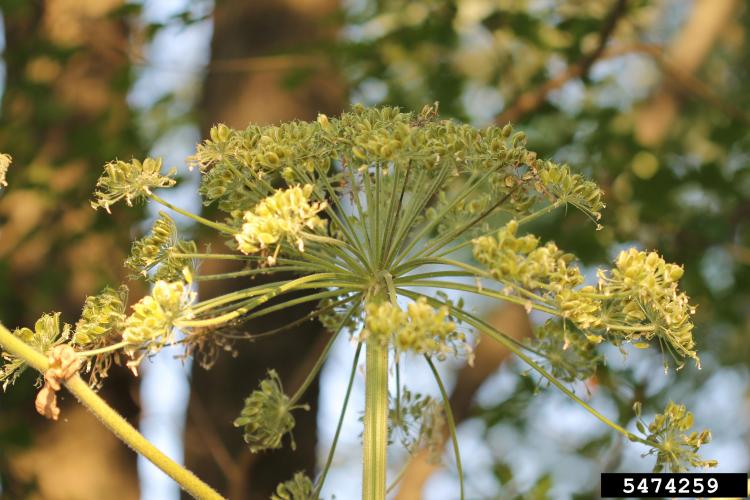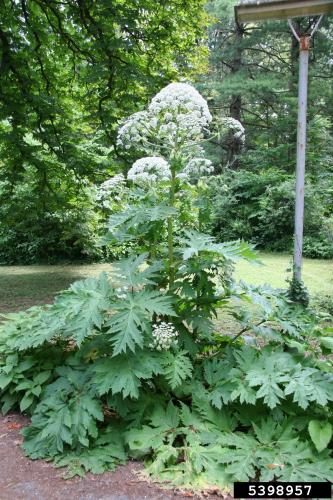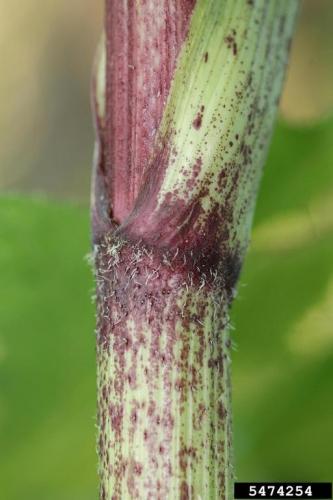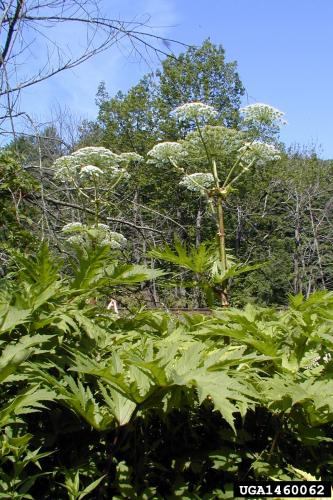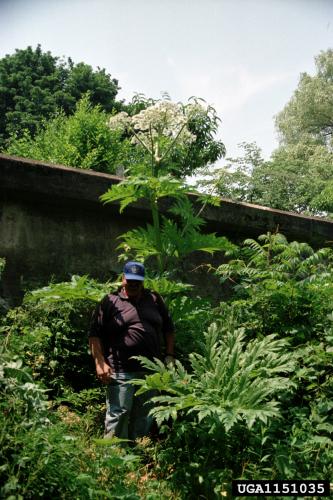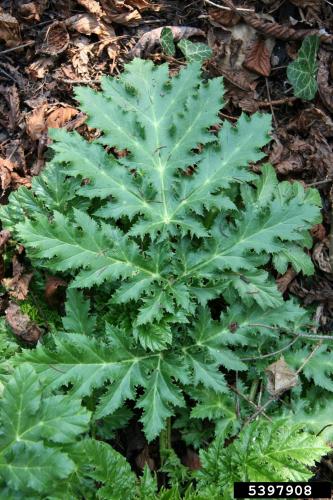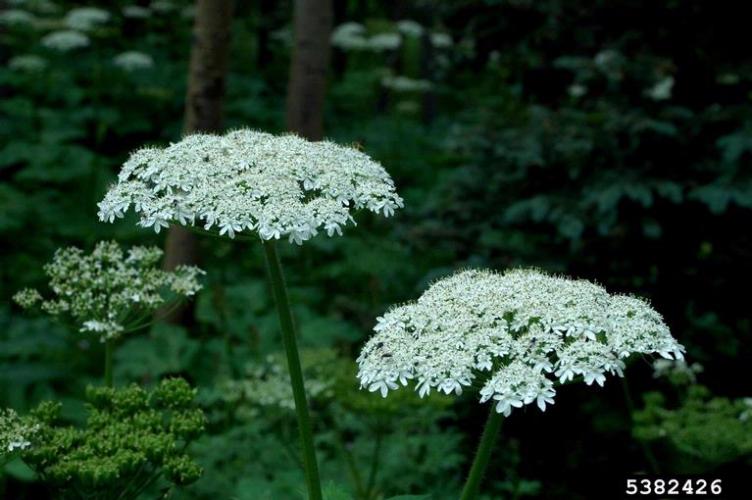Giant Hogweed
Identification
Giant hogweed is designated as a Federal Noxious Weed, because it produces sap that causes skin sensitivity to UV radiation and leads to blistering and severe burns. Learn more about this invasive plant in Vermont.
Appearance
Giant hogweed is a herbaceous biennial that can grow up to 7-14 feet tall. Hollow stems are 2-4 inches in diameter with dark reddish-purple spots and bristles.
Foliage
The leaves are deeply lobed, sharply pointed, up to 5 feet wide.
Flowers
Flowering occurs in late spring to early summer. The white flowers are on a large umbrella-shaped head at that can be up to 2.5 feet wide, with 50+ rays per cluster.
Fruit
Flattened, 3/8 inch long oval dry fruits that have a broadly rounded base and broad marginal ridges.
Look-a-likes

Biology
Ecological Threat
Because of its size and rapid growth, giant hogweed is an aggressive competitor capable of displacing native plants. It dies back during the winter months, leaving bare ground open to erosion on riverbanks and steep slopes. The sap of giant hogweed makes human skin sensitive to ultraviolet light, resulting in severe burns and blisters. Contact with the eyes can cause permanent blindness.
Origin
Giant hogweed is native to Europe and Asia. It was first introduced into the United States in 1917 for ornamental purposes.
Habitat
Giant hogweed can invade a variety of habitats but prefers moist, disturbed soils such as riverbanks, ditches and railroad right-of-ways.
Life Cycle
Giant hogweed sprouts in early spring and flowers early July. This perennial plant dies back after flowering, leaving tall dead stalks. It forms perenating buds which lie dormant through winter until the next growing season. It reproduces by seed dispersal only, not vegetatively. Each flower head contains approximately 1500 seeds, which can remain viable for up to ten years.
Vermont Distribution
iNaturalist project: Mapping for Healthy Forests Vermont
Present in Vermont.
How You Can Help
Giant hogweed is on the early detection list of plant species. Early detection of new infestations increases our ability to slow their spread and potentially eradicate them from affected areas.
Citations
Photo Credit
Terry English, USDA APHIS PPQ, Bugwood.org
Donna R. Ellis, University of Connecticut, Bugwood.org
Rob Routledge, Sault College, Bugwood.org
Robert Videki, Doronicum KFT, Bugwood.org
USDA Aphis PPQ Oxford NC, Bugwood.org
Information Credit
Video: Invasive Species Council of Greater Vancouver, Giant Hogweed
PA Dept Conservation and Natural Resources, Giant Hogweed
Vermont Chapter of The Nature Conservancy
